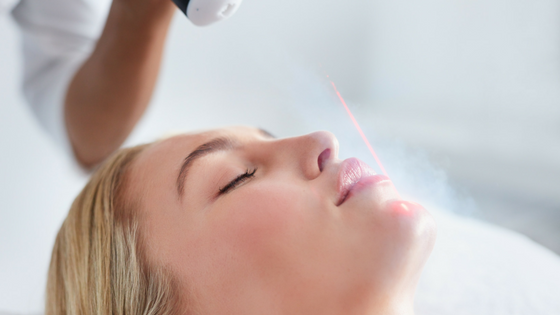Laser resurfacing has gone through a metamorphosis over the past 25 years. When laser resurfacing first started, it started with CO2 laser resurfacing. This laser was amazing and produced phenomenal results. The CO2 laser started taking the place of what was then phenol peels. Many physicians will still utilize phenol peels, especially around the mouth, when they are doing a facelift. While the CO2 laser yielded great results, there were downsides to this laser. The CO2 laser would take the pigment right out of the face, leaving patients with a pearly white face. Another downside was the healing process. It took about 2 weeks to heal.
Naturally along came other modalities to improve the texture and quality of the skin. In the aesthetic world there was a need for treatments to produce dramatic results, stronger than glycolic or TCA peels, but also less aggressive than the CO2 laser to get patients out in public in a faster time period. This brings us to the production of other types of lighter laser resurfacing; fraxel, sciton and more. These lasers changed the game for skin resurfacing with virtually no downtime, but still not as powerful as the CO2 laser.
Eventually they came around with the fractional CO2 laser, which is where we are today. At Houston Plastic & Reconstructive Surgery we use other modalities for texture and quality of skin besides laser. Other popular skin treatments at our office include chemical peels, IPL, and coming this summer a brand new treatment with the PicoWay Resolve laser. All of these treatments and procedures fit in at different levels of the spectrum with fractional CO2 laser as the most aggressive, the most powerful, and the longest lasting result.
The laser we have is the Lumenis UltraPulse® Encore™ fractional CO2 laser, which has two handpieces. One handpiece is called Deep FX, and the other is called Active FX.
- The Deep FX shoots a few micron wide beam, thousands of them. By adjusting the power, the laser can dive deeper and deeper into the tissues. The Deep FX causes a lot of collagen regrowth in the deeper dermis. There are many modalities that talk about collagen regrowth; this is the most profound.
- The Active FX takes care of the surface. Active FX is designed to fire more superficially to really vaporize that top layer without generating too much heat. This hand piece lifts that top layer of brown spots, little red spots, fine lines and wrinkles.
Your physician can combine the ActiveFX and DeepFX CO2 laser for the TotalFX skin resurfacing rejuvenation. Results for this procedure typically last for 6-8 years. If you are interested in learning more about your anti-aging options, contact us today for your complimentary consultation.


Leave a Reply